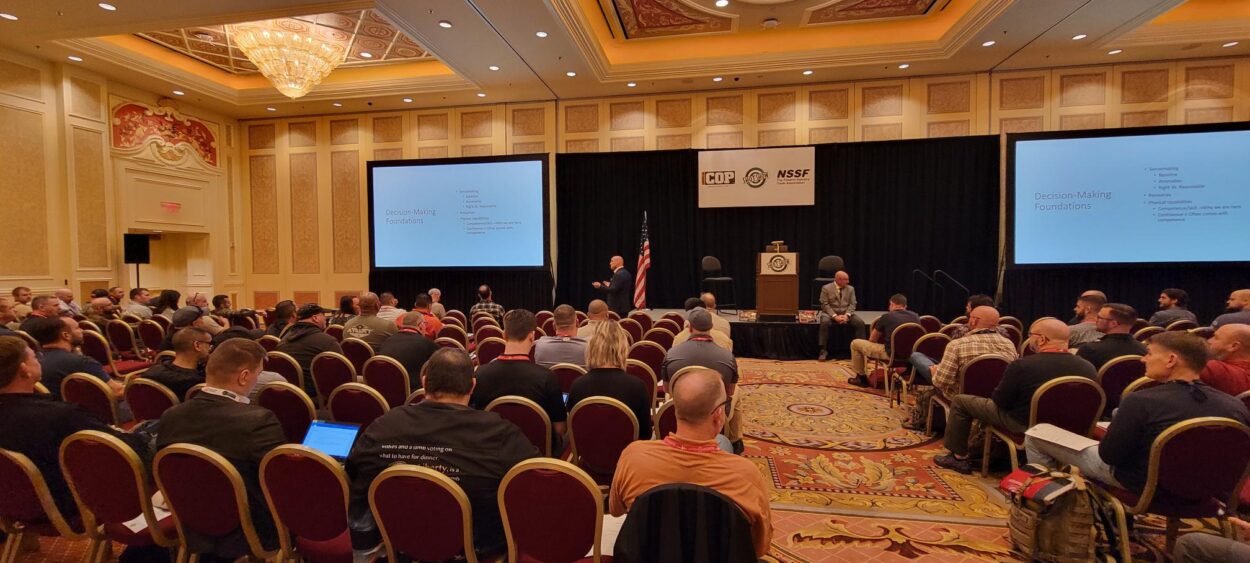
Written by Lon Bartel of VirTra
Published by Law Officer here
—
As part of the 2024 SHOT Show Law Enforcement Education Program Force Science’s Von Kliem and I reinforced the benefits of random practice over block practice in law enforcement skills training. Graduates of VirTra’s Advanced Trainer Certification Course or the Force Science Methods of Instruction Course are familiar with the research detailing the advantages of random practice for skill development. For those yet to be exposed to these advanced concepts, this article will outline the importance of random practice and its transformative effects on law enforcement training.
The Traditional Approach: Block Practice
Law enforcement training has primarily relied on block practice for decades. In block practice, a single skill or technique is repeated repetitively before moving on to the next. This path allows the trainee to improve at each repetition of the skill, and most will show improvement over time. While block practice has short term benefits, it falls short in preparing officers for the dynamic and unpredictable nature of real-world policing. Block practice can lead to rote memorization and the illusion of proficiency, but it fails to prepare officers to adapt and apply skills in complex situations.
Random Practice
Random practice involves mixing and varying skill sets in training sessions. With random practice, officers must constantly shift their focus and adapt to different demands, a process that more closely replicates real-life challenges. This method enhances skill transfer, promotes critical thinking, and improves decision-making. Although practice sessions will predictably involve more frequent errors and improper skill choices, the long-term benefits are undeniable.
Advantages of Random Practice for Law Enforcement Training
Adaptability: Random practice better simulates the unpredictable nature of law enforcement situations, preparing officers to respond effectively and swiftly in various scenarios. Instead of telling officers to deploy to a location where they will “draw and fire two rounds,” officers will be required to evaluate the problem, filter the signals, and identify the relevant information for decision-making and skill selection. Random practice fosters the ability to think on your feet and make split-second decisions, skills that are critical in high-pressure situations.
Retention and Transfer: By practicing a range of skills in a diverse and unexpected manner, officers are better able to retain and transfer their knowledge to new situations. Officers rarely get to execute a set play against a predictable offense. Instead, they learn to adjust among effective choice options identified and developed with random practice. This promotes a deeper understanding of the skills’ underlying principles, making it easier to apply them in unfamiliar contexts. Random practice challenges officers to think and problem-solve, improving their overall skill set. It helps them recognize patterns, adapt strategies, and develop a well-rounded approach to handling varied and novel situations.
Conclusion: Bringing Awareness to the Potential of Random Practice
Understanding the benefits of random practice begins with education and awareness. Meaning, to facilitate the highest level of performance and ultimately improve public safety, trainers must first familiarize themselves with the latest research and incorporate random practice into their training programs. By challenging officers with various skill choices, trainers can enhance officers’ adaptability, decision-making, and ability to apply techniques effectively. With random practice, we expect to elevate the skill and the transfer of those skills from the training room to the operating environment. Outcomes that will both protect our officers and the communities they serve.
Join me at SHOT Show next year, where we will continue to discuss the science of learning and the advantages of constraint-led approach to training.
Recently Published
Join Our Newsletter







